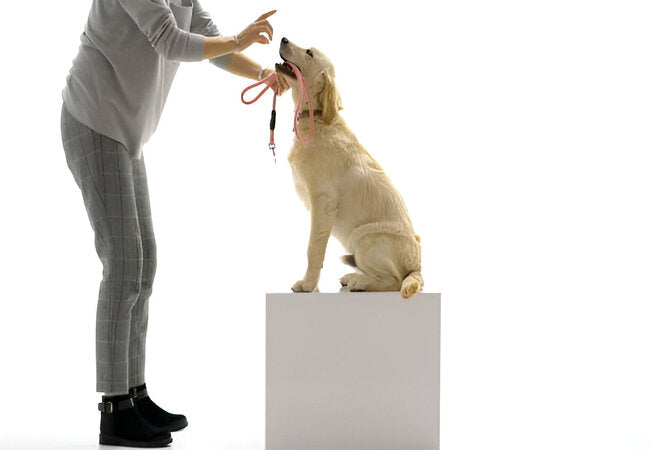Vet‑Approved 2025 DIY Puppy Obedience Training – Positive Reinforcement Tips 🐶🎓

In this article
Vet‑Approved 2025 DIY Puppy Obedience Training – Positive Reinforcement Tips 🐶🎓
By Dr. Duncan Houston BVSc
Bringing home a puppy is a joyful milestone, but it also means taking on the critical task of early obedience training. In 2025, veterinarians and animal behaviorists recommend starting young, using positive reinforcement, short sessions, socialization, crate/leash training, and clicker markers to teach life skills. This vet‑approved, step‑by‑step guide helps you build a confident, well‑mannered pup using kind, science‑based methods. Let’s get started! 🐾✨
1. 🕗 Start Early—8 Weeks to Critical Socialization
Training begins the moment your puppy arrives. Socialization from 8 weeks and classes by 12–16 weeks help them learn confidence and reduce fear-based issues.
- Introduce new people, pets, surfaces, sounds, and environments—always in a positive, calm manner.
- Keep all interactions short—end before signs of fear or stress.
2. 🧠 Positive Reinforcement Is Key
Veterinarians emphasize rewarding the behaviors you want, not punishing unwanted ones.
- Use treats, praise, or play to reward correct behavior immediately after it happens.
- Clicker training or marker words like “Yes!” bridge the gap between behavior and reward precisely.
- Track progress—ensure your puppy responds more reliably over time.
3. 🔄 Keep Sessions Short, Frequent & Fun
Puppies have limited attention spans. Experts suggest 5–10 minute sessions, multiple times per day.
- End early, on a positive note—don’t allow boredom or frustration to set in.
- Rotate between commands (sit, stay, come) to avoid monotony.
4. 🏠 Crate & House Training
Crate training supports potty training and gives puppies a safe den space.
- Introduce the crate with toys or treats—never use it as punishment.
- Follow a consistent schedule: potty break, play, crate for meals/naps.
- Anticipate needs: take your puppy out every 1–2 hours and after naps.
5. 🦺 Leash & Collar Introduction
Begin indoors with a comfy harness, then progress to easy leash walking.
- Start by letting your puppy wear a collar/harness around the house to get used to it.
- Teach your puppy to walk with you using treats for following your side—even just a few steps—building calm walking habits.
6. 🎓 Basic Obedience Cues
- Sit: Lure their rear down, mark + reward.
- Come: Use excited voice, click, reward near body.
- Stay: Build duration & distance gradually, reward for calmness.
- Down: Teach from sit by lowering chest to the floor, mark + reward.
Break each command into steps, reward emerging behavior, and prove it in varied environments.
7. 🐶 Reinforce Social & Gentle Handling
Habituate your pup to vet visits, grooming, and car rides through calm, positive exposure.
- Incorporate short handling sessions—touch paws, ears, muzzle while rewarding calm behavior.
- Practice stepping on a scale or entering a car—reward bravery and calm. Vet-associated experiences build life-long confidence.
8. 📋 Training Plan Example
| Time | Activity | Goal |
|---|---|---|
| Morning | Potty → Leash walk (5 min) | Build sit/heel cues |
| Mid-morning | Crate time with chew | Encourage calm alone time |
| Noon | 5‑min cue session | Reinforce sit/stay/come |
| Afternoon | Social walk or puppy playdate | Socialization & recall proofing |
| Evening | Short session + handling | Relaxed interaction & grooming prep |
| Bedtime | Potty → crate | Promote settled sleep |
9. ✅ DIY vs. Trainer Help
- DIY is cost-effective and strengthens bond—ideal if you stay consistent with sessions and rewards.
- Attend puppy classes (12–16 weeks) for guided socialization and basic obedience.
- Seek pro help for reactivity, fear, or complex behavior issues—avoid shock or dominance-based methods.
10. 🧰 Tools & Resources
- Clicker or marker word (“Yes!”) for precise feedback.
- High-value treats: small, soft, easy to consume.
- Comfy harness, standard leash—avoid retractable leads.
- Crate with bedding, interactive toys and safe chewables.
- Reference puppy books like *Puppy Start Right* or *Clicker Training for Dogs*.
11. 🛠 Troubleshooting Tips
- Puppy won’t focus: Reduce distractions, train before meal when hungry.
- Chewing/crate anxiety: Use chew toys, give short crate periods with praise, gradually increase duration.
- Pulling on leash: Stop walking when they pull, reward for slack leash—teach “heel.”
- Fearful or overwhelmed: Slow socialization, pair exposures with treats in low-stress settings.
📱 Ask A Vet App 2025 Support
- 📹 Upload videos—get expert feedback on timing, markers, handling, and puppy’s behavior.
- 🧩 Tailored training plans—based on your pup’s age, breed, and progress.
- 💬 Live coaching—for help troubleshooting socialization setbacks, recall issues, or anxiety.
❤️ Final Thoughts
DIY puppy obedience is both achievable and deeply rewarding. By starting early with positive reinforcement, clicker markers, socialization, and consistent training rhythms, you set the foundation for lifelong learning and a strong bond. In 2025, let’s raise happy, confident dogs—one kind, structured session at a time. You’ve got this! 🐶✨
Want a printable puppy training tracker or curated cue progression guide? Visit AskAVet.com or download the Ask A Vet app for expert blueprinting, video review, and live support. Your puppy’s best life starts now! 🐾






